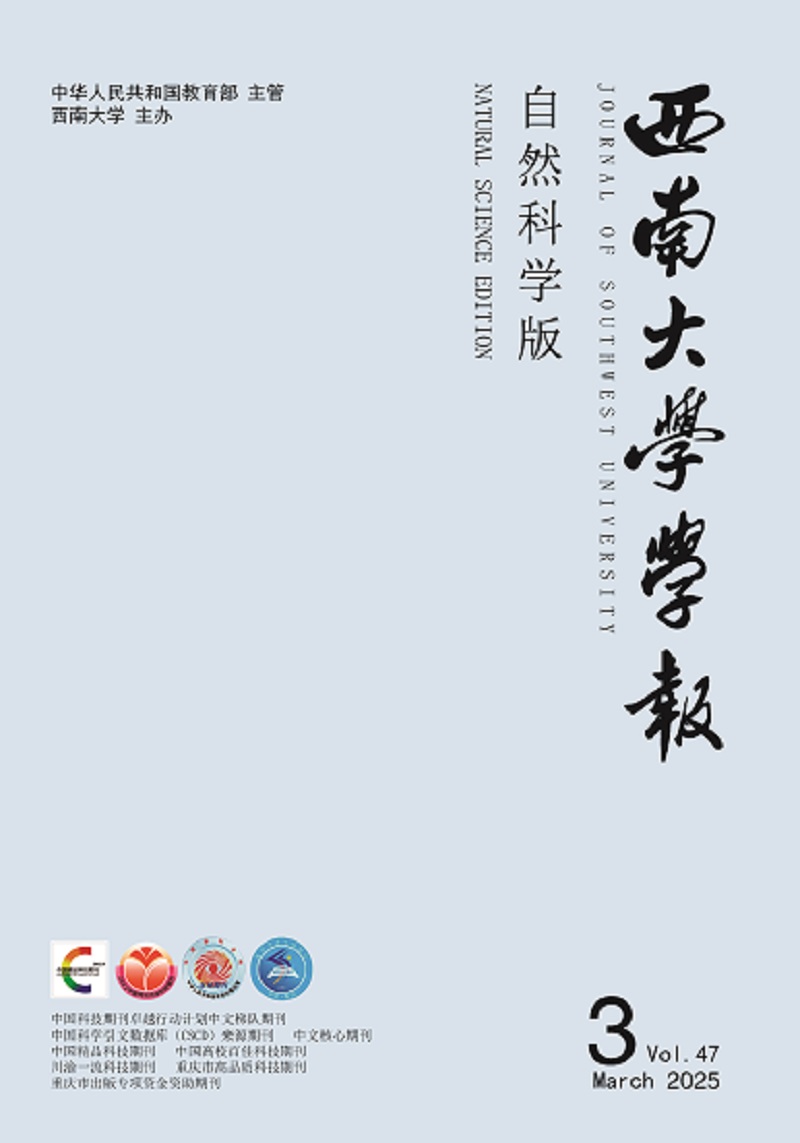-
本文所涉及的群均指有限群.设G是一个群,我们用π(G)表示|G|的所有素因子集合,用πe(G)表示G中所有元素阶的集合(又称为群G的谱).设H为任一满足πe(H)=πe(G)的有限群.若H与G同构,则我们称G是可以用谱刻画的.
根据施武杰教授的一个注记[1],含有非平凡正规可解子群的有限群是无法用谱刻画的,也就是说,存在无数多个与G的谱相同但是不同构的群.因此,谱刻画的问题只是针对含有平凡可解剩余类的有限群,尤其是单群和几乎单群.最早利用谱刻画有限单群的是施武杰教授,他在文献[2]中证明了最小的非交换单群,即5阶交错群A5,是可以用谱刻画的:即G≅A5当且仅当πe(G)={1,2,3,4,7}.后来人们对于一系列的单群进行了谱刻画,取得了很多结果(可见文献[3-9]).
利用πe(G),我们可以定义素图Γ(G)如下[10]:图的顶点为π(G)中的元素,两个顶点相连当且仅当两顶点的乘积包含在πe(G)中.显然,Γ(G)被πe(G)唯一确定,即,若谱相同,则其素图亦相同.因而素图刻画与谱刻画是紧密联系的.事实上,如果一个有限群是可以用素图刻画的,那么它一定是可以用谱刻画的,反之并不成立.
2005年,文献[11]首次提出了有限群的素图度数型这个概念,即OD-刻画,从此群论学者开始利用群的阶及其素图度数型来刻画单群,例如,文献[12]对单群L5(q)应用了OD-刻画.
我们称G为质幂元群,如果它的元素的阶均为素数幂.有限群元素的阶是有限群的一个基本算术量,通过这个量获取有限群的性质是有限群的一个重要课题.在以前的工作中,作者大多运用了单群的分类定理.不用单群分类定理刻画有限单群是有意义的工作.文献[13]用初等方法证明了G≅A5当且仅当πe(G)={1,p,q,r},其中p,q,r是两两不等的素数.本文我们给出单群PSL2(7)的特征性质,并给出初等证明,即下面的定理:
定理1 设G是有限群,则πe(G)=πe(PSL2(7))={1,2,3,4,7}当且仅当G≅PSL2(7).
这也是文献[13]中问题2的前部分.
引理1[14,定理1] 设G是有限可解群,若G的元素的阶为素数幂,那么|π(G)|≤2.
引理2[15,引理4] 设H是群,且N是其正规p子群.假设H/N=A:B是一个Frobenius群,p不整除|A|,且A以自然的方式非平凡地作用在N上.则对于任意的m∈πe(B),有pm∈πe(H).
定理1的证明
充分性易证,只需证明必要性.设G是一个极小阶反例.我们用Pr表示G的Sylow r -子群.
由引理1,G是非可解群.设N为G的极大可解正规子群,H/N为G/N的极小正规子群,则H/N为单群.设G=G/N.
由Burnside paqb-定理,πe(H)={1,2,3,7}或πe(H)={1,2,3,4,7}.
若πe(H)={1,2,3,7},由于G是质幂元群,由引理1,我们得到|π(N)|≤2.我们证明|π(N)|=1.否则,|π(N)|=2.则存在s∈π(G)-π(N).由于G是质幂元群,故NPs是以N为核的Frobenius群.因此,p1p2∈πe(N),其中pi∈π(N),p1≠p2.这与G是质幂元群矛盾.因此,|π(N)|=1.于是N是r-群,其中r是素数.我们证明r=2.否则,取H的Sylow 2-子群H2.由于G是质幂元群,我们得到NH2是以H2为补的Frobenius群.由文献[16]的定理10.3.1,H2循环或为广义四元数群.但注意到πe(H)={1,2,3,7},我们可得H2≅C2,这与H是单群矛盾.这样我们证明了r=2.
设Qi是H的Sylow i-子群,其中i是素数.则Q2初等交换.此时容易证明
$\left| {\overline {{Q_3}} } \right| = 3, \left| {\overline {{Q_7}} } \right| = 7$ .由于πe(H)={1,2,3,7}且H是单群,我们得$\left| {\overline H :{N_{\overline H }}\left({\overline {{Q_2}} } \right)} \right| \ge 5$ .若${N_{\overline H }}\left({\overline {{Q_2}} } \right) = \overline {{Q_2}} $ ,由Burnside正规补定理,H有正规2-补,这与H是单群矛盾.因此,$\left| {\overline H :{N_{\overline H }}\left({\overline {{Q_2}} } \right)} \right| = 7$ .由此得,$\overline H /{\left({{N_{\overline H }}\left({\overline {{Q_2}} } \right)} \right)_{\overline H }} \le {S_7}$ .由H是单群,则${\left({{N_{\overline H }}\left({\overline {{Q_2}} } \right)} \right)_{\overline H }} = 1$ 且H≤S7.注意到,H是单群,所以H≤A7.进而|H|≤23·3·7,因此H≅PSL2(7).但此时4∈πe(H),矛盾.若πe(H)={1,2,3,4,7}.首先,假设N≠1.由G是极小阶反例,我们可以得到H≅PSL2(7).由于N可解,所以|π(N)|≤2.同理,我们得到|π(N)|=1.无妨设N是p群.如果p=3或p=7,则S2∈Syl2(H)是循环群或广义四元数群,这与H≅PSL2(7)矛盾.因此p=2,N是2-群.由于PSL2(7)含有Frobenius子群C7:C3,由引理2,G有6阶元,矛盾.
因此,N=1,H≅PSL2(7).
由于H是G的正规子群,那么G/CG(H)≤PGL2(7).因G是质幂元群,所以CG(H)=1.因此G≤PGL2(7).由于PSL2(7)≤G,我们有G=PGL2(7)或G=PSL2(7).
若G=PGL2(7),则6∈πe(G),矛盾.因此G≅PSL2(7),但这与极小阶反例矛盾.这就证明了G≅PSL2(7).
A Characteristic of Simple Groups PSL2 (7) and Its Elementary Proof
- Received Date: 04/08/2017
- Available Online: 20/10/2018
-
Key words:
- finite group /
- element order /
- Burnside normal complement
Abstract: The order, the spectrum and the prime graph of a group are the basic methods in the study of finite groups. It is a hot topic to investigate finite groups by using the arithmetic properties (such as group order, the element orders and prime graph) of a group. Professor WJ Shi was the first to propose to characterize finite simple groups by group order and element orders. He also proposed a famous conjecture named "WJ Shi Conjecture", which has been solved up to now. However, most of the researchers used the "Classification of Finite Simple Groups". In this paper, we try characterizing the finite simple group PSL2(7) without using the "Classification of Finite Simple Groups". Instead, we show by an elementary proof that G≅PSL2(7) if and only if πe(G)={1, 2, 3, 4, 7}.






 DownLoad:
DownLoad: